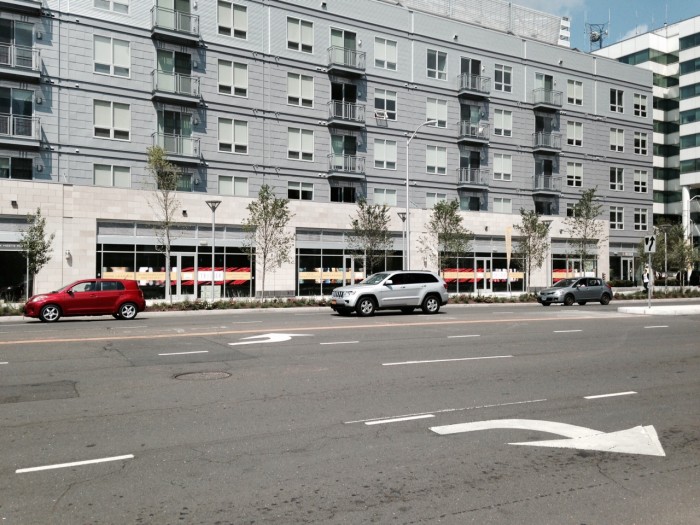
Stamford is one of the fastest-growing cities in Connecticut, and a big part of that growth has been concentrated in mixed-use, multi-family developments built in and around downtown Stamford in the last decade.
Along with new residents, downtown Stamford has also attracted jobs. Unlike many stops along the Metro North New Haven Line, Stamford is not a bedroom community, but “an edge city with corporate and media spillover from New York” that draws an ever-increasing share of reverse commuters to downtown job centers within walking distance of the McKinney Transportation Center.
But being within walking distance only takes you so far. Downtown Stamford is a short walk from the Transportation Center, but that doesn’t mean it’s a safe or attractive walk. Walking between the train station and major employment hubs like Landmark Center and office buildings along Tresser Boulevard requires passing under Interstate 95, crossing wide, multi-lane arterials, and walking along streets lined with blank walls and parking garages (more examples in photo gallery below).
With all the new mixed-use development happening downtown, it’s clear that Stamford has figured out the land use side of smart growth. What’s needed now is a renewed focus on downtown streets, especially in light of two recent pedestrian fatalities and the fact that Stamford has the highest per capita pedestrian crash rate in Fairfield County with 240 people struck by vehicles between 2010 and 2012. On Monday, Tri-State partnered with Stamford’s Downtown Special Services District to conduct a walking audit of the east-west Main Street corridor and identified plenty of streets and pedestrian crossings in need of improvements; future audits will focus on other areas downtown, including the streets around the Transportation Center.
But walking audits only raise awareness. Moving forward, the Connecticut Department of Transportation and the City of Stamford must reimagine Stamford’s downtown streets so that they prioritize the people who live, work and play downtown, not just the motorists who are driving through. ConnDOT must fully implement the State’s Complete Streets law and Stamford should move quickly to adopt a local Complete Streets ordinance of its own.
Part of Stamford’s recent success has come thanks to downtown’s density and proximity to robust intercity transit. But if downtown streets fail to safely and comfortably accommodate pedestrians, people on bikes and transit users, the City’s smart land use decisions will have been a waste.
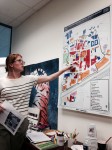
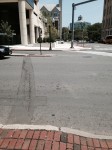
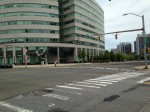
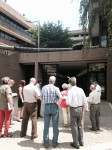
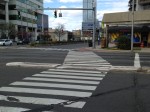
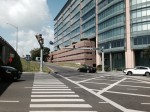
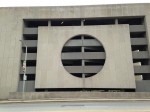
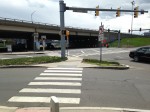

You should do a northern suburban city contest between White Plains and Stamford. Which place is worse for pedestrians and bicycles.
[…] Reimagining Downtown Streets in Stamford, CT (Mobilizing the Region) […]
[…] developments; on other blocks, Stamford is more like an automobile-dominated edge city with wide, high-speed streets that make getting around on foot or by bicycle a challenge. So it’s good news that the […]
[…] see in a suburban office park, and Stamford’s new Street Smart program doesn’t address the downtown area’s wide arterials that shun pedestrians and […]
[…] sustained serious injuries after she was struck by a driver late last week while crossing Washington Boulevard at Main Street in downtown […]
[…] the loss of this garage might be enough of a reason to forgo driving to the station entirely. But Stamford’s streets in the vicinity of the Transportation Center aren’t exactly the most pedestrian- or […]
[…] Traffic and Parking. Although the appointment will require approval by Stamford’s Board of Representatives, the selection of Benson is a telling sign that Stamford is serious about addressing the challenges presented by its streets. […]